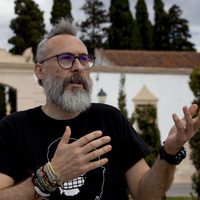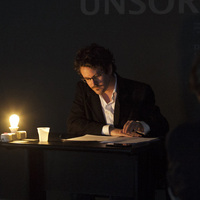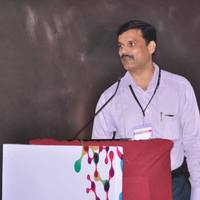
Melanie Swalwell
I am Professor of Digital Media Heritage at Swinburne University, in Melbourne, Australia.
Recent publications include a monograph _Homebrew Gaming and the Beginnings of Vernacular Digitality_ (MIT Press), which combines games historical research with a focus on user practices. And an anthology I edited _Game History and the Local_ (Palgrave), which presents chapters reflecting on the significance of locality for game history.
I am currently editing an anthology with David Murphy with the working title _Crafting, hacking, making_, and working on a history of 'creative micro-computing' in Australia between 1976-92, which began when I was an ARC Future Fellow. A short film about this project is here: https://youtu.be/hR8-10qjoiI
I am the Project Leader for two current ARC Linkage Projects: "Play It Again: Preserving Australian videogame history of the 1990s" and "Archiving Australian Media Arts: Towards a method and national collection" (2020--23). I also lead "The Australian Emulation Network: Accessing Born Digital Cultural Collections," an ARC LIEF infrastructure project which is rolling out a local EaaSI network.
Recent publications include a monograph _Homebrew Gaming and the Beginnings of Vernacular Digitality_ (MIT Press), which combines games historical research with a focus on user practices. And an anthology I edited _Game History and the Local_ (Palgrave), which presents chapters reflecting on the significance of locality for game history.
I am currently editing an anthology with David Murphy with the working title _Crafting, hacking, making_, and working on a history of 'creative micro-computing' in Australia between 1976-92, which began when I was an ARC Future Fellow. A short film about this project is here: https://youtu.be/hR8-10qjoiI
I am the Project Leader for two current ARC Linkage Projects: "Play It Again: Preserving Australian videogame history of the 1990s" and "Archiving Australian Media Arts: Towards a method and national collection" (2020--23). I also lead "The Australian Emulation Network: Accessing Born Digital Cultural Collections," an ARC LIEF infrastructure project which is rolling out a local EaaSI network.
less
Related Authors
Noel B. Salazar
KU Leuven
Mia Consalvo
Concordia University (Canada)
James Elkins
School of the Art Institute of Chicago
Richard Kahn
Antioch University
Jordi Vallverdú
Universitat Autònoma de Barcelona
Simon Werrett
University College London
Angela Ndalianis
Swinburne University of Technology, Hawthorn
Dylan Trigg
Central European University
Dr. K.R.Mulla
Visvesvaraya Technological University
Maurizio Forte
Duke University
InterestsView All (24)










Uploads
Books by Melanie Swalwell
This document reports on what the project team did and how we went about the work of: locating artworks (1.3.1, 2.2); recovering content from obsolete media carriers (3.1); emulating this content (3.2-3.4); and considering questions of curation and exhibition (4). The effort to develop a good practice method to preserve media artworks has been arrived at in conjunction with cultural institutional partners which bridge the diverse cultures, norms and protocols of galleries, libraries, moving image museums, university collections and researchers.
Key outcomes to date include: the acquisition of media art organisation archives into cultural institutions (1.2, 2.1, 5.4); stabilising a large number of disks and artworks from the collections and archives addressed; the emulation of all 32 of the artworks that required emulation; a research protocol that entails sharing access to emulated works with artists in the course of an interview (1.3.2), and seeking their permission for various preservation and research uses going forward (2.3); exhibition outcomes (4.3-4.6); and a database detailing media arts holdings across public collecting institutions nationally (5.3).
The preservation of significant digital heritage artefacts in this project demonstrates the considerable power of research-GLAM consortia in digital preservation. The successes have been made possible by a combination of funding and multi-directional knowledge transfer: from the academy to GLAM professionals; from GLAM partner expertise to university researchers; and the equally generous sharing of knowledge between discrete organisational teams.
The collaborative approach and buy-in from stakeholders has built a nascent community with the confidence to tackle the particular challenges that are entailed in collecting, stabilising and emulating complex digital artefacts. No one institution is undertaking this work in isolation; rather, they are part of a national digital preservation ecosystem, supported by a core research team with high level specialist skills.
Chapters 1 & 12 are open access: https://link.springer.com/book/10.1007/978-3-030-66422-0
Papers by Melanie Swalwell
This document reports on what the project team did and how we went about the work of: locating artworks (1.3.1, 2.2); recovering content from obsolete media carriers (3.1); emulating this content (3.2-3.4); and considering questions of curation and exhibition (4). The effort to develop a good practice method to preserve media artworks has been arrived at in conjunction with cultural institutional partners which bridge the diverse cultures, norms and protocols of galleries, libraries, moving image museums, university collections and researchers.
Key outcomes to date include: the acquisition of media art organisation archives into cultural institutions (1.2, 2.1, 5.4); stabilising a large number of disks and artworks from the collections and archives addressed; the emulation of all 32 of the artworks that required emulation; a research protocol that entails sharing access to emulated works with artists in the course of an interview (1.3.2), and seeking their permission for various preservation and research uses going forward (2.3); exhibition outcomes (4.3-4.6); and a database detailing media arts holdings across public collecting institutions nationally (5.3).
The preservation of significant digital heritage artefacts in this project demonstrates the considerable power of research-GLAM consortia in digital preservation. The successes have been made possible by a combination of funding and multi-directional knowledge transfer: from the academy to GLAM professionals; from GLAM partner expertise to university researchers; and the equally generous sharing of knowledge between discrete organisational teams.
The collaborative approach and buy-in from stakeholders has built a nascent community with the confidence to tackle the particular challenges that are entailed in collecting, stabilising and emulating complex digital artefacts. No one institution is undertaking this work in isolation; rather, they are part of a national digital preservation ecosystem, supported by a core research team with high level specialist skills.
Chapters 1 & 12 are open access: https://link.springer.com/book/10.1007/978-3-030-66422-0
This project aims to collect documentation from the public - and, where feasible, source code - in order to create a picture of the software written locally, and to present this online.
"More Than A Craze" is an online exhibition consisting of 46
photographs of New Zealand's early digital games scene, in the 1980s. The exhibition includes the work of some of New
Zealand's best known documentary photographers – Ans Westra, Christopher Matthews, Robin Morrison – with images from the archives of Wellington's Evening Post and Auckland's Fairfax newspapers. These photographers captured images of games, gamers and gameplay in the moment when these were novel. These images are significant in that they offer insights into the early days of digital games. They are an important primary source material for researchers interested in the history of play and interactive entertainment.
The exhibition has been curated by Melanie Swalwell and Janet Bayly. It is an online exhibition, hosted by Mahara Gallery, Waikanae. It is one of the outcomes of Swalwell's research into the history of digital games in New Zealand, in the 1980s.